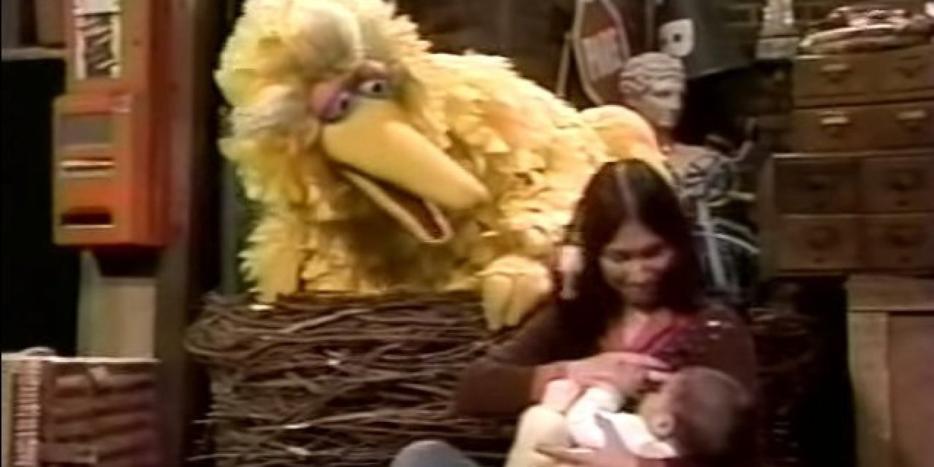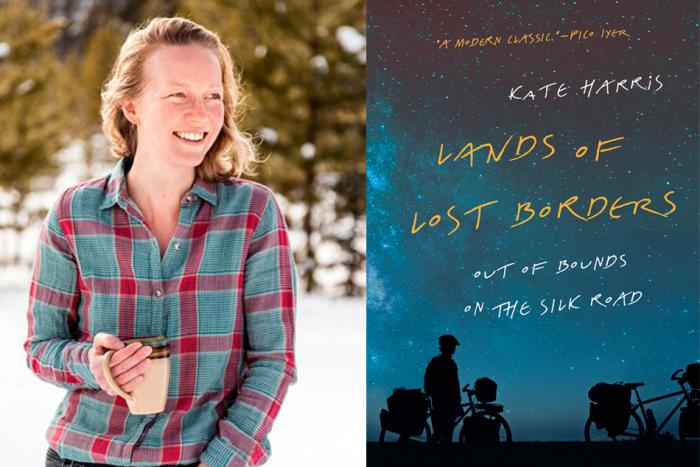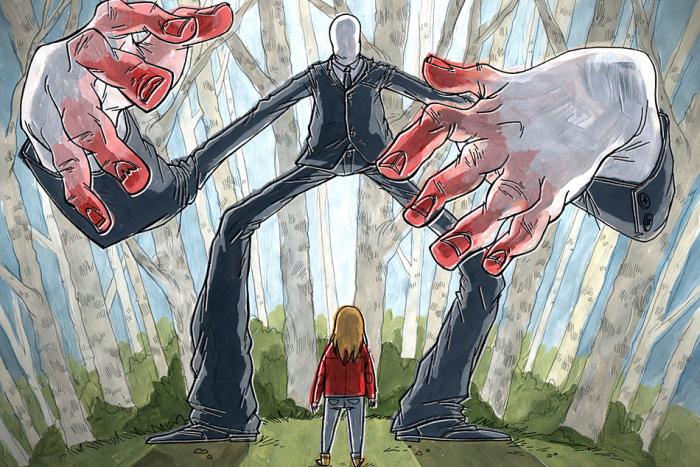In late 1975, Buffy Sainte-Marie received a call from Dulcy Singer, the Sesame Street associate producer who would later become her boss. The folk-rock musician had been touring European clubs and concert halls along with First Nations reservations in Canada, but her career had come to a standstill in the States, where her music didn't get much airplay beyond low-watt college stations. She hoped Sesame Street would change all that. Singer wanted Sainte-Marie on the show for a one-off appearance—merely to "recite the alphabet stuff or count," as Sainte-Marie later remembered it.
Instead of a one-episode appearance, Sainte-Marie pitched a more ambitious project to Singer. She wanted to create a curriculum for kids to learn about "modern-day Native American culture.” Sainte-Marie had made it her mission to portray her own Cree heritage, as well as the history of other Indigenous peoples of the Americas, with a representational nuance.
Born in 1941 in Saskatchewan on a Cree reservation and raised by adoptive parents between Maine and Massachusetts, Sainte-Marie had long committed herself to educating the world at large about Indigenous life, culture, and history, founding the Nihewan Foundation for American Indian Education scholarship fund for Indigenous students in 1969. She was looking to expand her knowledge and its reach to kids and their caregivers, to preemptively deflect from any racism aimed towards Indigenous peoples.
Sainte-Marie knew that Sesame Street was the ideal platform. She felt that the show’s format was revolutionary. She suggested having a few segments per episode, mostly devoted to singing and acting in the role of Big Bird’s best friend, the mononymous Buffy. She was certainly up to the task, having been an elementary school teacher before she was a singer. She began appearing on the show in 1976. A few episodes into her tenure with Sesame Street, she and her husband, Sheldon Wolfchild, discovered that she was pregnant.
When Dakota Starblanket Wolfchild, nicknamed Cody, was born in 1976, Sainte-Marie woke up in the hospital next to a huge basket of formula company samples, but she didn’t want her kid to have them. She could barely entertain the thought of having to sterilize her infant’s bottle in the middle of the night. How arduous. Sainte-Marie only wanted to breastfeed him, even though breastfeeding was somewhat out of vogue at the time. “My OB-GYN had never received much training on breast feeding and couldn't advise me," she wrote to me recently. "Like most things in parenthood, breastfeeding was an acquired skill.”
At first, Sainte-Marie worried that her pregnancy would limit her time on Sesame Street, prematurely derailing what she’d hoped would be a long stint on the show. But she imagined it’d be more fun to, somehow, devise a plan to make her son’s recent birth a plot point. Her solution was simple. She figured she’d breastfeed during one segment.
Sainte-Marie’s desire to breastfeed her child on television was deeply personal, and tied to her larger mission on Sesame Street. Her Cree family had lost two daughters in the days when churches had made breastfeeding illegal, forcing Indigenous women to drive miles in a horse-pulled buckboard to a farmer who sold them cow’s milk which could spoil before it got to the babies.
The segment would be part of Sainte-Marie’s larger campaign to combat widespread popular ignorance regarding her own heritage and the practices that flourished within her community. "I expected that it might be too much for television,” Sainte-Marie said. “But [the producers] were keen to do it." Singer responded enthusiastically, seeing an opportunity to fold the pregnancy into the show’s narrative.
The scene, which appears midway through the 116th episode of season eight, unfolds with mundane calm. Big Bird was horribly jealous of Cody, and that had become a running gag during Sainte-Marie’s time on the show: KEEP OUT! a sign outside Big Bird’s nest read, referring to Cody. THAT MEANS YOU. But during this segment, merely 150 words and 56 seconds long, Big Bird softens. He comes upon Sainte-Marie breastfeeding her child. Big Bird is taken with this gesture he’d never seen, the sight of a kid huddled at his mother’s bosom, nibbling for nutrition and comfort.
"Whatcha doin', Buffy?" Big Bird asks, craning his neck and peeking at Sainte-Marie from his nest.
"Feeding the baby,” she responds. “See? He's drinking milk from my breast."
He sidles up next to her, compelled and bewildered by the sight unfolding in front of him. “That’s a funny way to feed a baby,” he tells her.
The camera closes in on Sainte-Marie cradling her son as she explains that many mothers feed their babies this way, though not all mothers. The reason Cody likes the milk from her breast, though, is because it’s "nice and warm and sweet and natural, and it's good for him. And I get to hug him while I do it, see?"
Big Bird asks if that’s all Cody ever needs to eat. Sainte-Marie clarifies: As her child gets older, she will mash up fruit, vegetables, and meat for him. But for now, she explains, her breast milk is all that he needs.
“I think we probably shot it just once,” Sainte-Marie told me. “The way we did it was entirely natural and not sensational. It was as real as your own home and children. The reception was no big deal, at least that I could see. I don't recall a single complaint.” In that era, Sainte-Marie and the Sesame Street crew were filming two shows per day, so they had to act fast. She ad-libbed the script.
This was not the last time that Sesame Street would feature a woman breastfeeding. That was in 1988, when Maria, played by Sonia Manzano, delivered the same message to kids in a scene that’s a simulacrum of the original with Sainte-Marie, with the same casual magic as its antecedent. A child looks on as Manzano holds her newborn daughter close to her breast. It lasts just under a minute. Beyond this, there’s a three-second still during a photo montage from 1980 showing a mother feeding her child through her overalls. A 2007 version of this clip would swap those frames out for bottle-feeding.
*
“The Buffy Sainte-Marie episode is generally hailed as the first TV depiction of breastfeeding, and remarkably remains one of the few most realistic, normative representations to date,” Katharine Foss, author of 2017’s Breastfeeding and Media: Exploring Conflicting Discourses That Threaten Public Health, writes me. It’s gone mostly downhill since then, in Foss’s view; while there are a few more televisual representations of breastfeeding now than there were in 1977, she feels the majority don’t have the thoughtfulness and care of that Sesame Street episode. “Three of the most prevailing, and often intersecting, trends in this regard include breastfeeding as played for laughs; as eroticized; or as gross at best, demonized at worst,” she says.
Foss surmises that the reason we haven’t seen too many positive depictions of breastfeeding is due to increased legislative control over women’s bodies, particularly in their reproductive stages. In dramas, for example, breastmilk has often been treated as leaky, unwanted discharge; Foss points me to a 2008 Criminal Minds episode in which a mentally ill serial killer breastfeeds older children, who aren’t related to her biologically, until they starve to death. There’s also an episode of the second season of American Horror Story in which a killer grows so sexually obsessed with breastfeeding that he hires a "postpartum prostitute" to nurse from. He then murders her.
In sitcoms, meanwhile, the breast becomes a rank spectacle for comic relief. In the first season of Friends in 1995, Chandler and Joey are supremely weirded out by Ross’s ex-wife breastfeeding. Seven years later, in the first episode of season 9, Joey is as frazzled by the sight of Rachel breastfeeding as he was eight seasons back. His increased sexual frustration at being unable to access Rachel’s breasts becomes the butt of the joke. A season 3 episode of Gilmore Girls, broadcast in 2002, depicts Luke recoiling in horror at a patron unbuttoning her blouse to feed her child. “Is that woman what I think she’s doing?” he says. “When did that become acceptable?”
“Looking back, having an Indigenous woman ... be the mainstream television depiction of breastfeeding feels radical,” Angela Garbes, a Seattle-based writer currently working on a cultural history of breastfeeding, says. “These days, breastfeeding, if it's portrayed on television at all, almost always invokes a male gaze, or at least a gaze that includes discomfort, confusion about the use of breasts for something non-sexual, and judgment, and is almost exclusively done by white women.” She cites a 2011 episode of Game of Thrones that depicts a grown woman breastfeeding a six-year-old, a scene that deliberately perverts the act of breastfeeding and portrays it as monstrous social behavior.
“Representations like these reflect the ongoing tensions and debates about women’s place in the public sphere and the politicizing of motherhood,” Elizabeth Podnieks, author of 2012’s Mediating Moms: Mothers in Popular Culture, says. She’s noticed something of a trend wherein cries for women to breastfeed openly and without fear often result in blowback from a prudish public, effectively silencing women. These mothers, in Podnieks’ view, are “encouraged and often shamed to go back to the proverbial kitchen to feed their babies in private.”
The most recent study gauging public opinion on the matter of breastfeeding found 43 percent of Americans felt women had the right to breastfeed in public. When it came to depicting breastfeeding on television, only 28 percent felt it was permissible, characterizing breastfeeding in public as indecent and immodest.
Constructing a timeline of breastfeeding on American television provides insight into the extent of American squeamishness—and, more alarmingly, the growing sense of disquiet surrounding the female body and its capabilities. The puppeteers of this hysteria were legislators who championed what Garbes terms a “medicalized model of women's reproductive care.” Newly-maternal bodies, Rebecca Kukla writes in Mass Hysteria: Medicine, Culture, and Mothers' Bodies, are sites of biological marvel: they "leak, drip, squirt, expand, contract, crave, divide, sag, dilate, and expel. It is hard not to see why such bodies have long seemed to have dubious, hard to fix, permeable boundaries."
*
Something about Saint Marie’s 1977 clip, originally broadcast on three different channels in 72 different countries, was resonant enough for it to resurface in December of 2011, when self-christened mommy-blogger Lani Michelle of “Boobie Time” became the first to voice her concern about what she perceived to be a precipitous decline in depictions of breastfeeding on television.
This representational shift struck Michelle as conscious rather than coincidental, corresponding to the growing anxiety regarding breastfeeding in America outside the home. Any segments, she realized, that featured children being fed by the breast had been replaced with bottle-feeding. The bare breast had disappeared from Sesame Street.
Michelle had just discovered this clip of Sainte-Marie breastfeeding Cody floating around on YouTube, a living document of an era that America no longer knew. “I wish they would redo this scene for the current series! Maybe with a [sic] Celeb,” Michelle lamented on her blog. “It would help normalize breastfeeding to a culture that has completely sexualized breastfeeding.” Less than one month later, another blogger, Jessica Williams, began a petition that echoed Michelle’s laments and took them to action, demanding Sesame Street re-introduce breastfeeding into its segments. The petition called for a balance between representations of breast and bottle feeding.
The campaign obtained over 35,000 signatures and attracted bountiful press. Such attention eventually made its way to Sesame Street’s makers. The Sesame Project responded vaguely to these sentiments: "Sesame Street is a research-based educational program designed to teach our preschool audience. Each new season is intended to deliver on a specific curriculum; this year the curriculum is science, technology, engineering and math (STEM). We have depicted breast-feeding in the past when it was a natural part of the storyline."
The clamor of Williams’s campaign quietly died down soon after the Sesame Project’s statement. It became quite clear that Saint-Marie’s moment on Sesame Street might have been the best it’d ever get for breastfeeding on television; ever since that day in 1977, representations of the act on American television have buoyed between farcical and borderline crass, lazy injections of humor where the mother’s breast is somehow sexualized and turned into an object of fetish. The realities of this bodily function and its demands—of pumping, of engorgement, of pain—are often sidelined, if not ignored altogether.
There are a few shows that have treated breastfeeding with a degree of nuance. Take the first episode of season 5 of Sex and the City, broadcast in 2002, wherein Miranda breastfeeds her newborn as Carrie tries to stifle her horror and fascination, mostly at the size of Miranda’s breasts. The scene does not distance itself from the banal realities of breastfeeding, nor does it make the perceived oddness of this gesture into the butt of the joke. The camera lingers over Miranda’s breasts as she performs the magnificently boring, exhausting labor that breastfeeding entails. Episode 3 of the second season of Catastrophe depicts the deadening tedium of pumping, when Sharon Horgan's character, still breastfeeding her second child, goes on a romantic weekend getaway with her husband but forgets her breast pump, a lapse in memory that makes her terribly embarrassed. And now, female celebrities can share the realities of breastfeeding on social media—like Chelsea Peretti pumping in a gown in the bathroom of the Golden Globes.
What these depictions get right is applying a sense of normalcy and realism to the act of breastfeeding. Breastfeeding isn’t a punchline, nor is it meant to arouse. These women are allowed to stake bodily claim to public space without other people’s discomfort being centered. For the most mature depictions of breastfeeding on television, you’d have to look back once again, and again, to children’s television: a 1984 episode of Mister Rogers’ Neighborhood that devotes a chunk of its runtime to breastfeeding in humans and animals alike; a 1997 Rugrats episode dedicated to Mother’s Day that shows just-born twins Phil and Lil in a flashback, suckling their mother’s breast. Perhaps this isn’t entirely surprising—these shows need to speak the language of kids. Who better than this demographic to understand that a mother’s breast is the first way many of us learn to satisfy our hunger?
“It’s not like I was committing an act of activism for the cause,” Sainte-Marie wrote to me when prompted to revisit this moment 40 years ago. It’s a scene now etched in the history of American television and designated as radical by total accident, purely because of the absence of similar images in the medium.
“[Breastfeeding] just made sense to me personally and to other mothers too, Indigenous and non-Indigenous,” she said. “And it was lovely and easy and convenient and nourishing. So why not explain it to Big Bird in a real way like you would to a real child, who Big Bird represents?”






